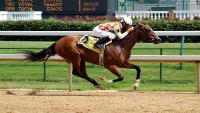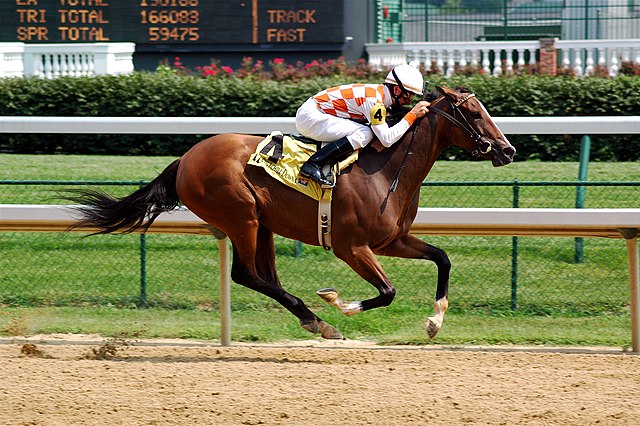Many animal advocates feel that horseracing has become too dangerous and that it is past time for certain reforms. After a rocky start to the Triple Crown races, some have renewed calls for an end to the sport without certain reforms going into effect. However, are these reforms too little, too late?
A Troubling Triple Crown Season
The 2023 Triple Crown races saw tragedy before The Preakness’ running. In the ten days leading up to the Kentucky Derby, seven horses died at Churchill Downs or nearby. This number is shocking, even for animal advocates who follow this type of news regularly.
However, these incidents weren’t the end of it by any means. During one of the races leading up to The Preakness, Havnameltdown, the favorite for the stakes race, bucked forward, threw jockey Luis Saez, and continued to run. Saez, complaining about leg pain, received treatment at a local hospital.
Havnameltdown had a fractured bone in his left front ankle that veterinarians deemed inoperable. There was some speculation about whether a hit that the horse took as he came out of the gate was to blame. Even as horse advocates mourn the loss of these beautiful creatures, there are renewed calls for changes that could prevent such tragedies in the future.
These deaths came ahead of the industry reaching an important juncture between reduced Thoroughbred deaths and higher purses.
Are the Horses Too Young to Race?
Advocacy groups have called for training and racing to be delayed until the horses are three. Horses under three have not finished growing, and the stresses of racing put needless pressure on the equines’ bones. Injuries contribute to at least 800 Thoroughbred deaths yearly.
Hairline fractures and strained tendons are often difficult to diagnose. In many cases, these injuries can progress to untreatable levels. Surgery is a path that many owners and veterinarians opt not to take.
Horses often have difficulties coming out of anesthesia without disorientation, which complicates surgery. Slings or casts might be necessary to keep a limb immobilized following surgery. These restraints often result in the horses receiving further injuries.
Racehorses have high veterinary costs, averaging $50,000 a year or more for each horse, before treating injuries. Many owners have horses euthanized after a serious injury because of possible compications.
Should Medications Be Stopped Before Races?
Racehorses receive a variety of drugs to enhance their performance on the track. Corticosteroids and anti-inflammatories are some of the legal drugs used to mask horses’ pain. Drugs that control lung bleeding are also common in the racing world.
One of the problems with many of these medications is their ability to mask signs the horse is in distress. Horses may continue running with severe injuries or with bleeding lungs. If it is easier to spot a horse in distress, steps might be possible to prevent a more serious injury or worsened condition.
Do Horses Compete in Too Many Races Per Season?
Many animal advocates feel that horses compete in too many races per season. One piece of evidence cited in favor of this idea is the incidence of Triple Crown competitors breaking down in spite of their relatively light racing schedules before big races.
The National Thoroughbred Racing Association (NTRA) has questioned the status quo on horse racing. NTRA has called for implementing solutions, rather than merely identifying problems.
Would CT Scans Prevent Injuries?
Dr. Dionne Benson and Aidan Butler, the CEO of the Stronach Group that owns tracks in three states, have advocated for the use of standing position emission tomography machines on horses. This technology can detect some of the fractures that have historically been responsible for equine injuries resulting in euthanasia.
If veterinarians can detect potentially severe injuries before they worsen, they may be able to prevent them from reaching career and life-ending proportions.
Is It Time to Ban Whipping?
Whipping is also a practice that has attracted criticism. Horses with leg injuries will continue running if whipped, often resulting in fractures that lead to euthanasia. This is a preventable tragedy that happens too often for horse advocates to tolerate.
At a race in Bay Meadows Park in CA, a gelding named Imperial Eyes kept running after an injury because of his jockey’s whipping. Imperial Eyes was euthanized after suffering a broken leg. Russell Baze, the jockey, received only a two-week suspension and a small fine.
What About Synthetic Tracks Over Dirt Tracks?
Synthetic tracks are regarded as safer because they contribute to fewer breakdowns resulting in injury than dirt tracks. All race courses in California use synthetic tracks and have seen fewer injuries and deaths.
Does Tracking Gaits Prevent Equine Injuries?
Dr. Scott E. Palmer of the New York State Gaming Commission has highlighted the changes that injured horses face, including laminitis. He has taken a lead in advocating for stronger regulations about medications and safer racing surfaces that have saved horses’ lives.
Palmer has speculated about whether the technology behind Fitbit devices could detect gaits likely to result in injury. If utilized, such technology may prevent these injuries in the future.
The number of horses dying on racetracks is unacceptable to horse advocates. Even many successful horses their ultimate end in on-track euthanasia. We can and must do better for racehorses.




